[Editor’s note: This photo essay was created in collaboration with the Narwhal.]
Wednesday, June 30, 2021: the day British Columbia came out of a 67-week state of emergency. The day before an unmarked Canada Day. The day the town of Lytton burned down.
We shouldn’t have been surprised. Three days of high temperatures had shattered all-time records, with Lytton, B.C., reaching an unfathomable 49.6 C — the highest ever recorded in Canada.
B.C. that week had already seen hundreds of sudden deaths brought on by “a heat onslaught more intense by some measures than anything in global records,” says Bob Henson and Jeff Masters from Yale Climate Connections, in an article for The Tyee. Many who died were found alone in their homes waiting for overstretched paramedics to arrive.
And then the Lytton wildfire happened.
With only 15 minutes to gather their belongings and evacuate the town, residents fled in all directions, not knowing which, if any was safe. By the time I arrived on July 2, residents had been constantly on the move finding loved ones, animals and places to sleep. Some came to Lillooet but then it too was evacuated. Some Lytton residents headed north to Kamloops, finding it under threat of intense lightning storms, which would ignite nearby forests. Evacuations became re-evacuations.
I was interested to know how residents in these highly affected areas felt about climate change and its role in the wildfires. It was barely July and our province was on fire. First Nations account for 40 per cent of evacuations in Canada, yet make up only four per cent of Canada’s overall population, according to climate author and Queen’s University fellow Ed Struzik. This overrepresentation speaks to the vast, systemic inequalities in Canada, a country seemingly obsessed with covering up examples of environmental racism.
I received the full spectrum of opinions on climate change, from “It’s climate change — it will change. It’ll be hot, then it’ll be cold. It’s fine,” to “If we don’t start treating this planet with respect, we’re doomed.” What was made clear to me, is that in a time of crisis, people step up to help. Whether it’s giving, receiving or distributing donations, housing, feeding or uplifting spirits, both individuals and whole communities have given up their time and sleep to look after the needs of others. Let me introduce you to a few of these heroes.
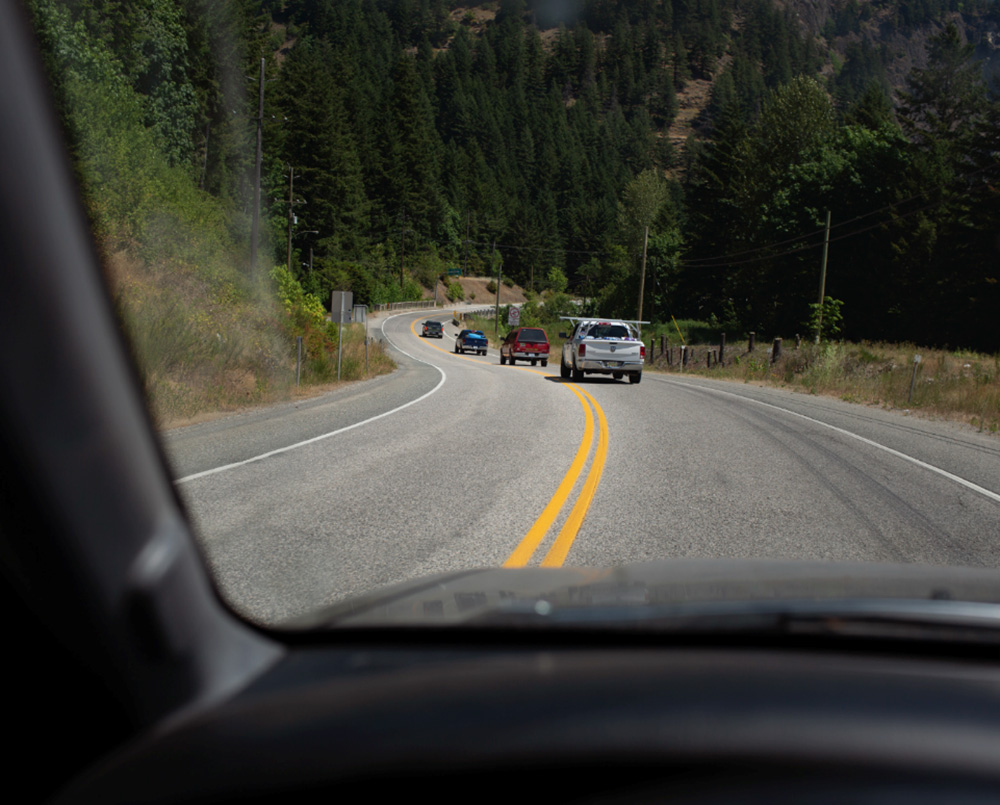
I joined a convoy of members of the Pil'alt Canoe Family, or River Spirit Canoe Family, travelling from Hope to Siska First Nation, just south of Lytton, to drop off food and water for the Lytton firefighters. With more than 90 per cent of the town burned to the ground including the fire station, firefighters on the ground must travel south to Siska to receive basic supplies.
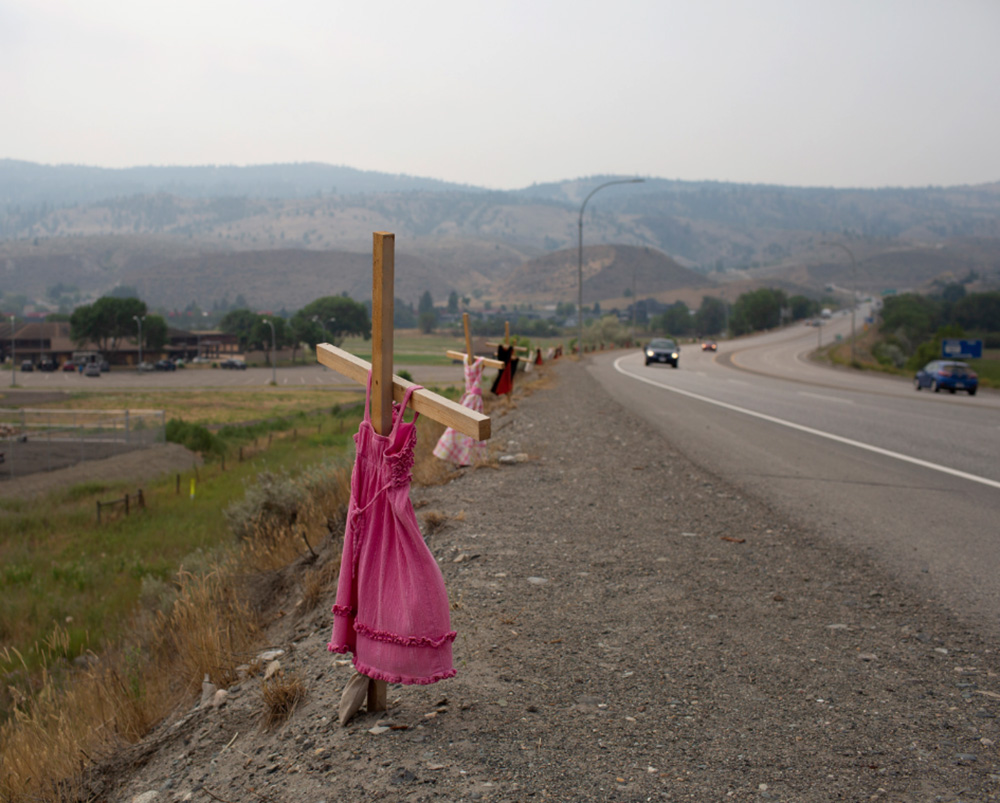
Many evacuees, including those from Lytton, are either survivors of, or are traumatized by the recent location of the remains of 215 children found buried at Kamloops Residential School.
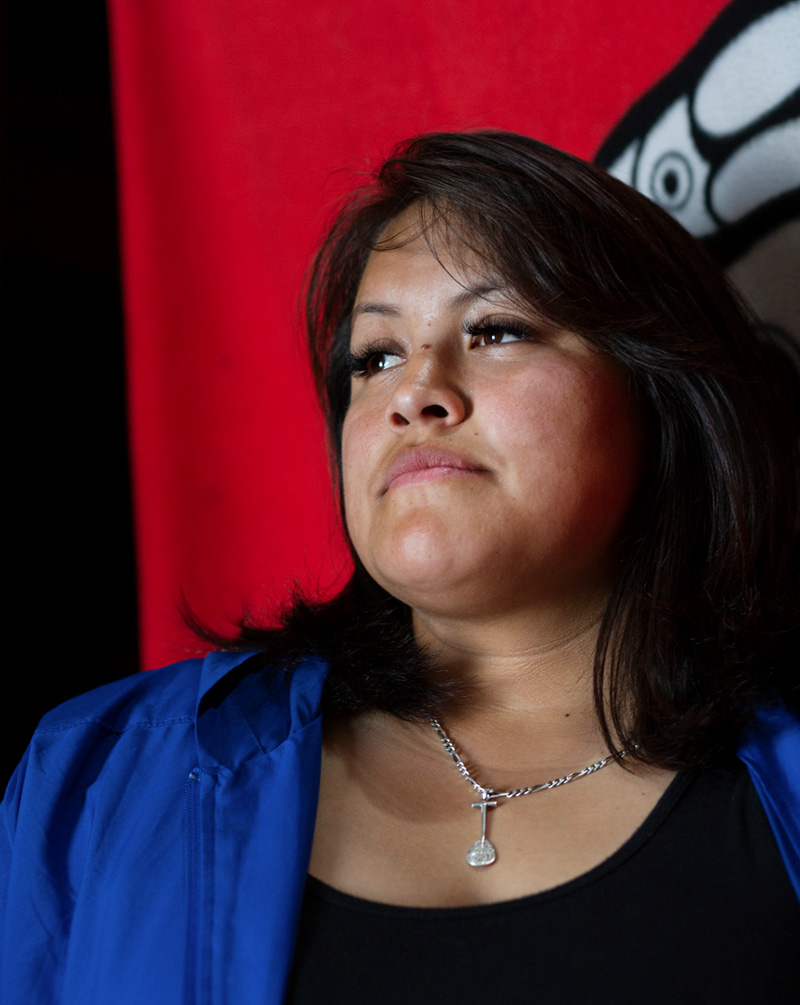
Tyrell Kenworthy is an elected councillor and emergency response manager for the Shxwhá:y First Nation whose territory includes Chilliwack.
When Kenworthy saw that a member of the Cheam First Nation had started taking donations for the Lytton evacuees, she told him that she would open Shxwhá:y Village Long House for lodging if needed. “It escalated from there,” she says. Members from Cheam First Nation delivered a truck and trailer full of donations to Shxwhá:y Village, where Kenworthy and volunteers began receiving and organizing them. They’ve adopted themselves as the "Cultural Welcoming Centre" for any evacuees in Chilliwack.
“As First Nations people, we know the importance of their well-being and with a lot of people being traumatized from having to leave their homes, we wanted to be here to support all of the families in any way that we can,” Kenworthy says. Anybody that has been evacuated can turn up at the Shxwhá:y Village Long House and stock up on what they need — toiletries, clothing, food — as well as stay for dinner and singing each evening. “We want to take care of their spirit, take care of their well-being — try to heal them a little bit. I know that it’s a long road to healing, but we’re here to uplift them in any way that we can.”
When I asked Kenworthy what role she believes climate change has played in the extreme weather events in the region, she said “climate change has really affected our First Nations people.” She told me that last year the salmon were so scarce that her community barely made it through the off-season. As people who live off the land, climate change has a much greater impact on First Nations peoples than on those less connected with their environment. “We look after the land and we live off the land.”
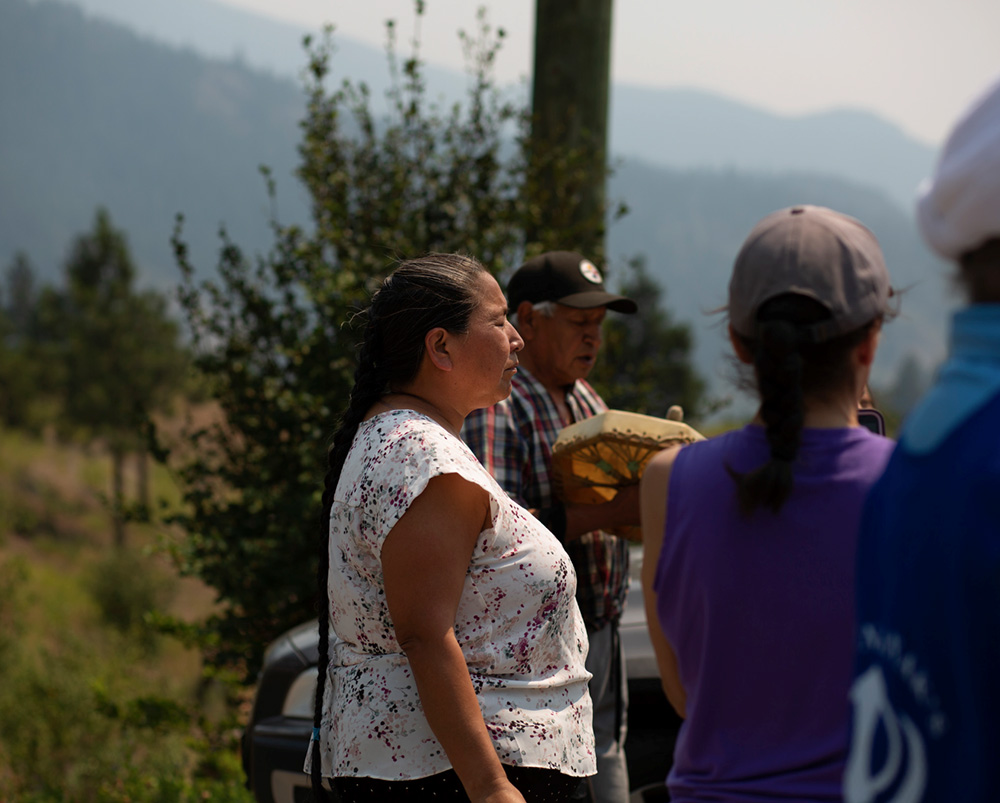
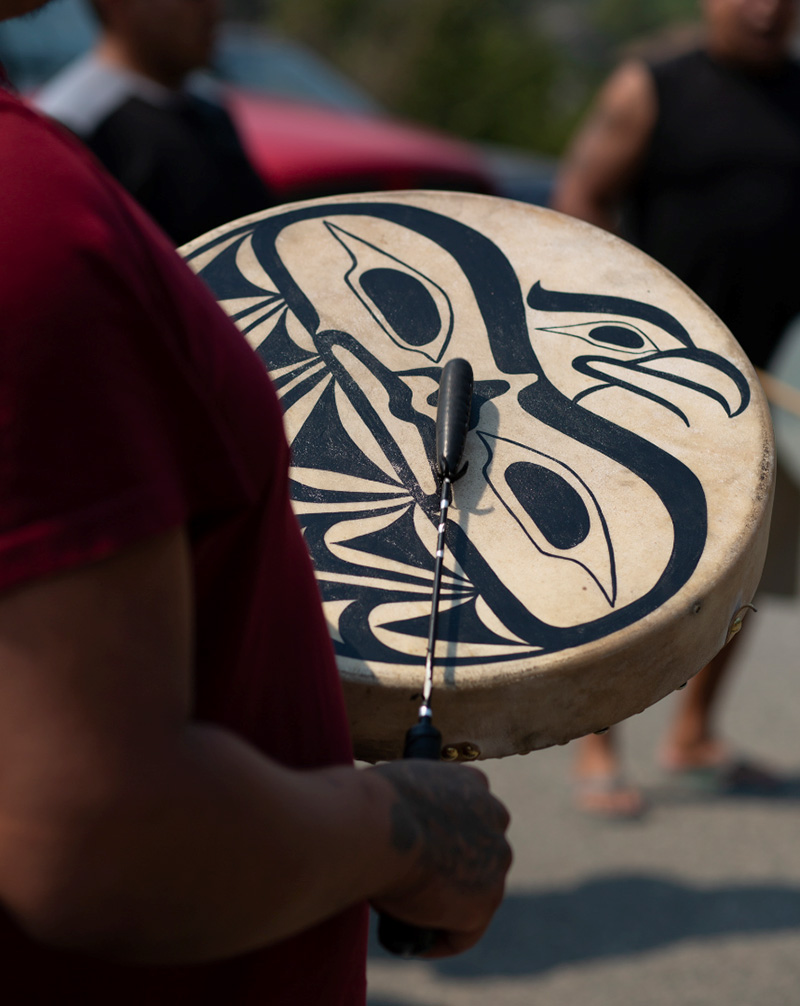
Members of the Siska First Nation welcome the River Spirit Canoe Family, who arrive in their territory offering their help and support. Siska is located 10 kilometres south of Lytton. The Siska community regard Lytton as part of their home.
“We know you. We love you. We respect you. This is the least we can do for you,” says Russell Williams, member of the River Spirit Canoe Family.
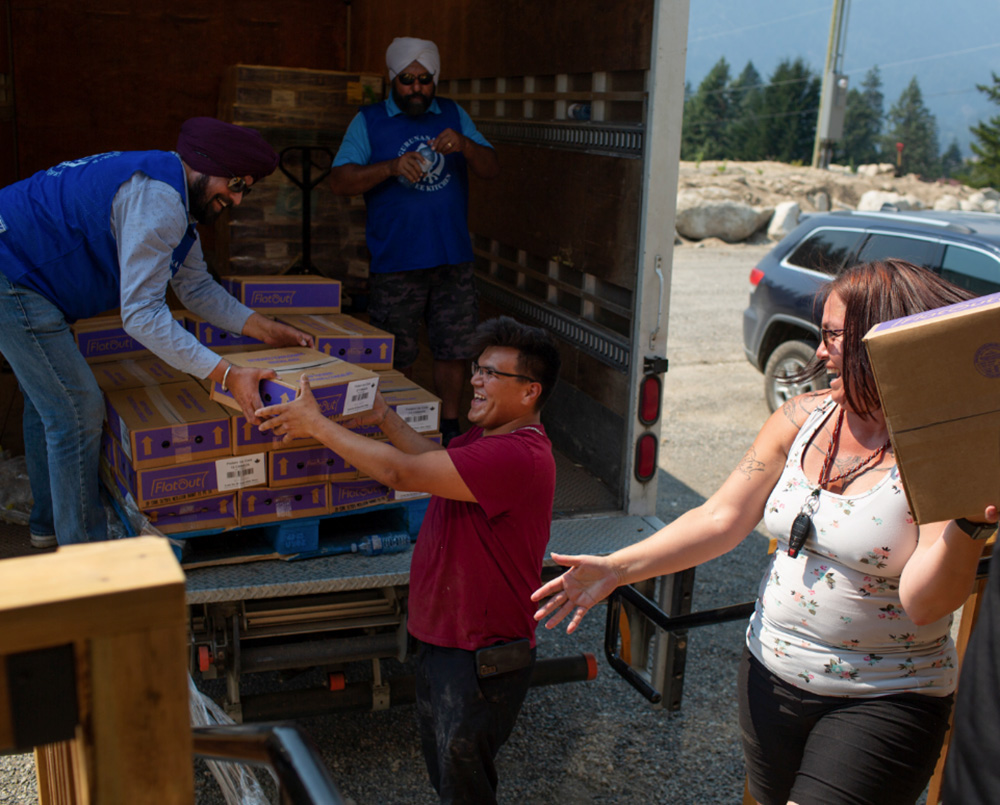
Along with the Pil’alt Canoe Family, volunteers from Guru Nanak’s Free Kitchen, based in Vancouver, deliver food and water to Siska First Nation for the Lytton firefighters. They’ve worked closely with Shxwhá:y Village for some time. “We distribute food to whoever needs it, whenever they need it,” says volunteer Manjit.
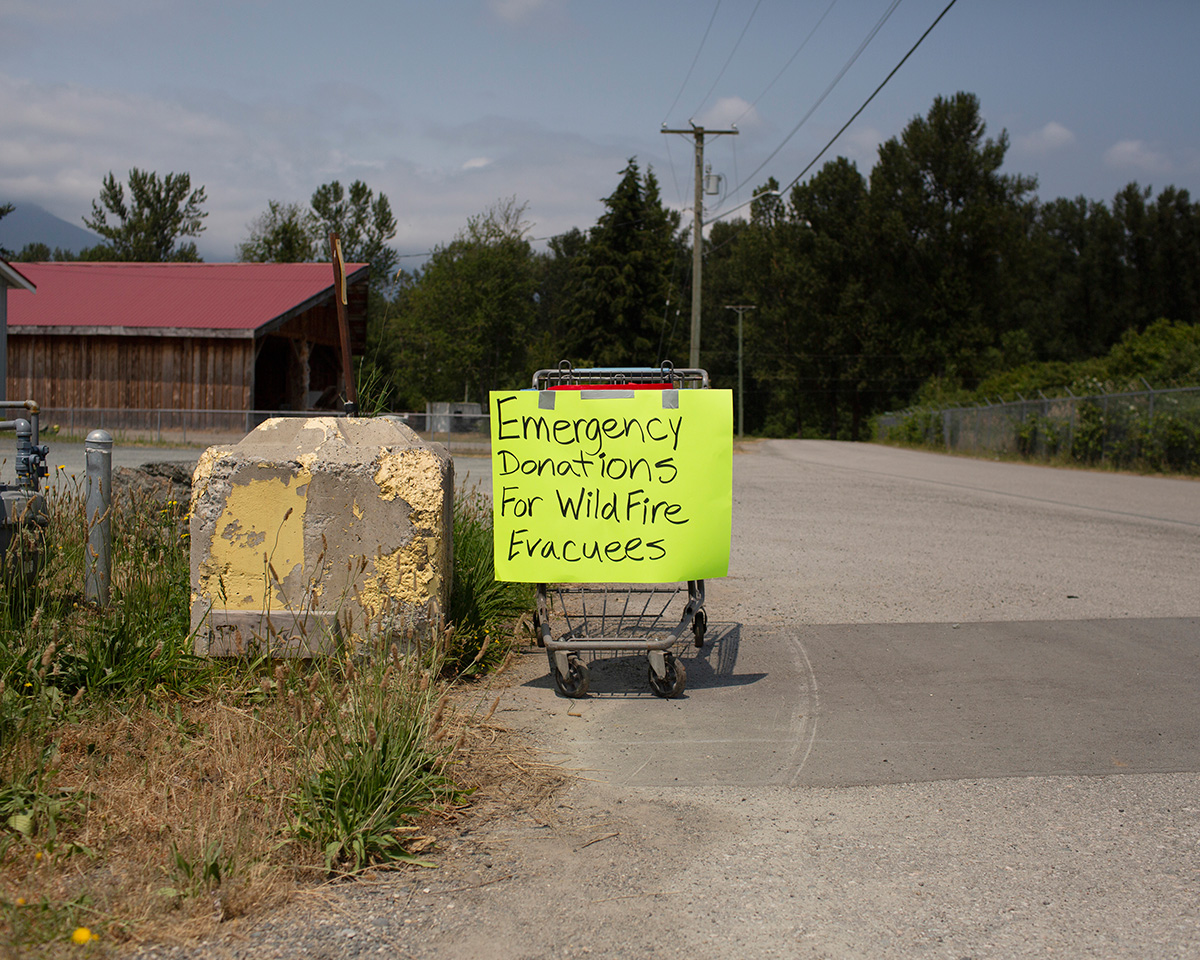
Kenworthy explained to me that as well as assisting any evacuee that needs their help, her community is also assisting the province. “They need that Indigenous community drive work ethic that we have because we know so many people and we know how to communicate.”
After spending three days on the road driving between affected communities, I wondered what the response would look like without communities like Shxwhá:y and individuals like Kenworthy, who has been surviving on four hours of sleep a night (if that), racked up thousands of kilometres on the road transporting supplies to those who need it, supplied beds and food each night, and provided cultural and spiritual healing through singing and drums.
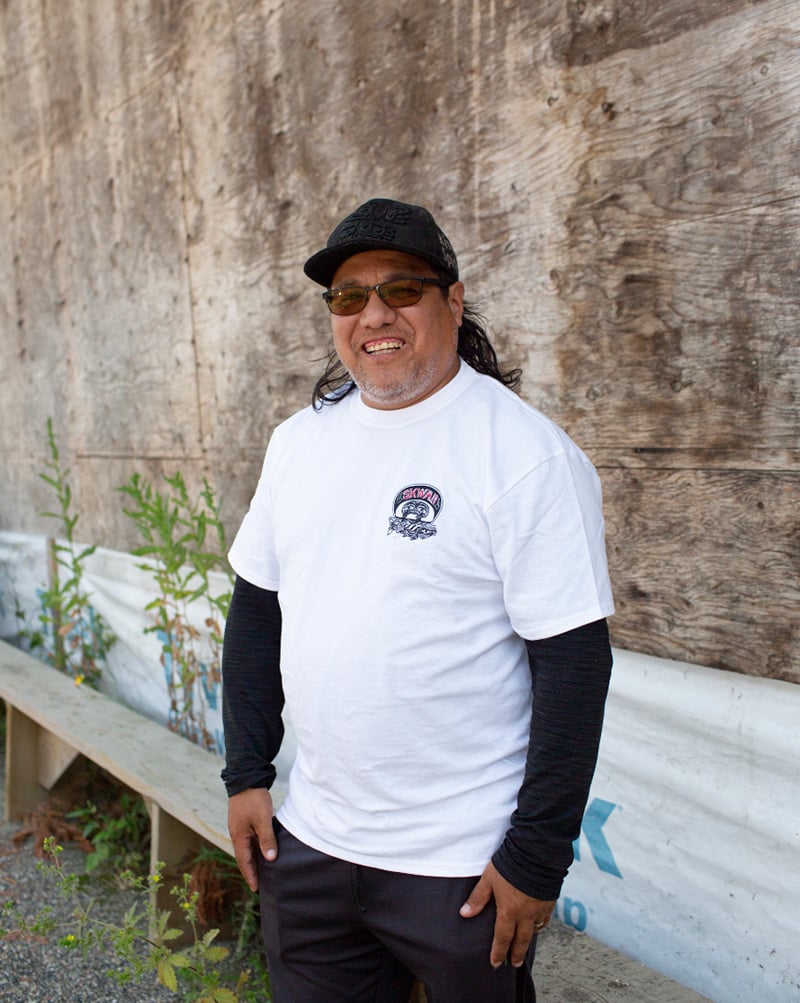
Ron Prest is the emergency program co-ordinator and director for the emergency operation centre for the Skwah First Nation.
Prest told me that normally at this time his team would be focused on flood watch season, which is in full swing due to snow melt. “If the rivers get any higher we’ll be in flood season, but we’re prepared for that. We just need to watch the water levels.”
Just two weeks prior to the Lytton fire, Prest and Kenworthy “unofficially agreed” that they would act as the emergency social services for evacuees anywhere in B.C. “We just knew that we were capable of doing it and that we would work together in order to do it.”
Kenworthy explained that unlike the dry lands of the Interior or the ocean towns, Chilliwack is well situated to avoid disasters from extreme weather events. “We’re just ready,” she says.
Below are scenes from the Shxwhá:y Village Long House in Chilliwack, including children helping to organize donations for evacuees.
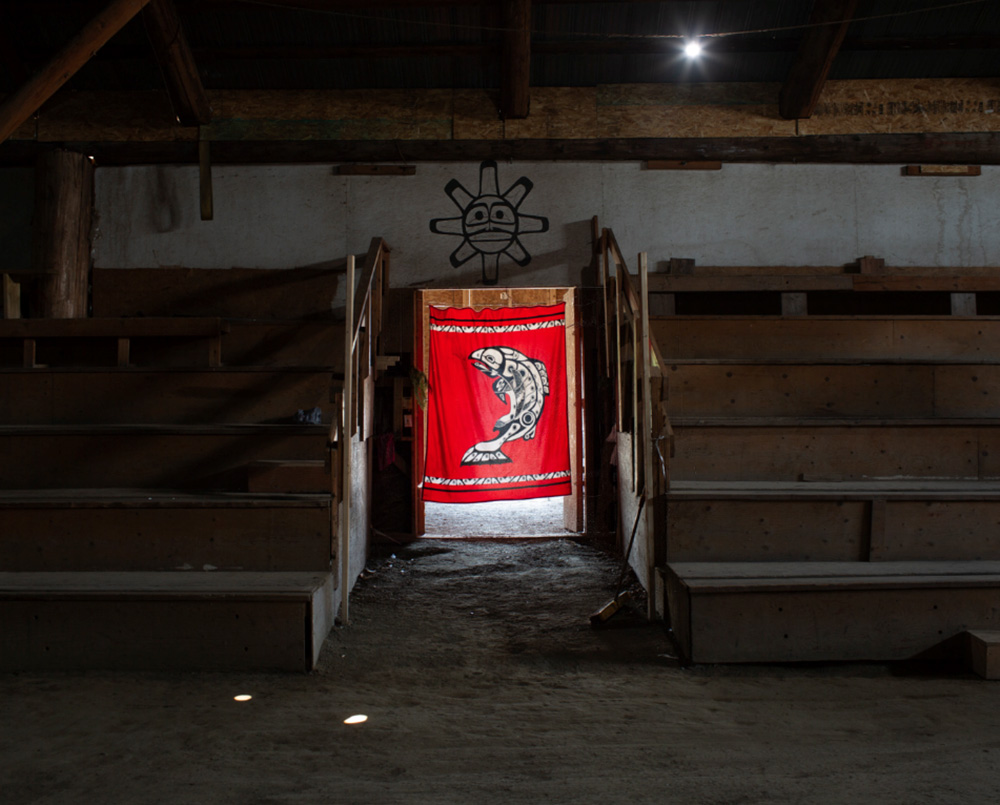
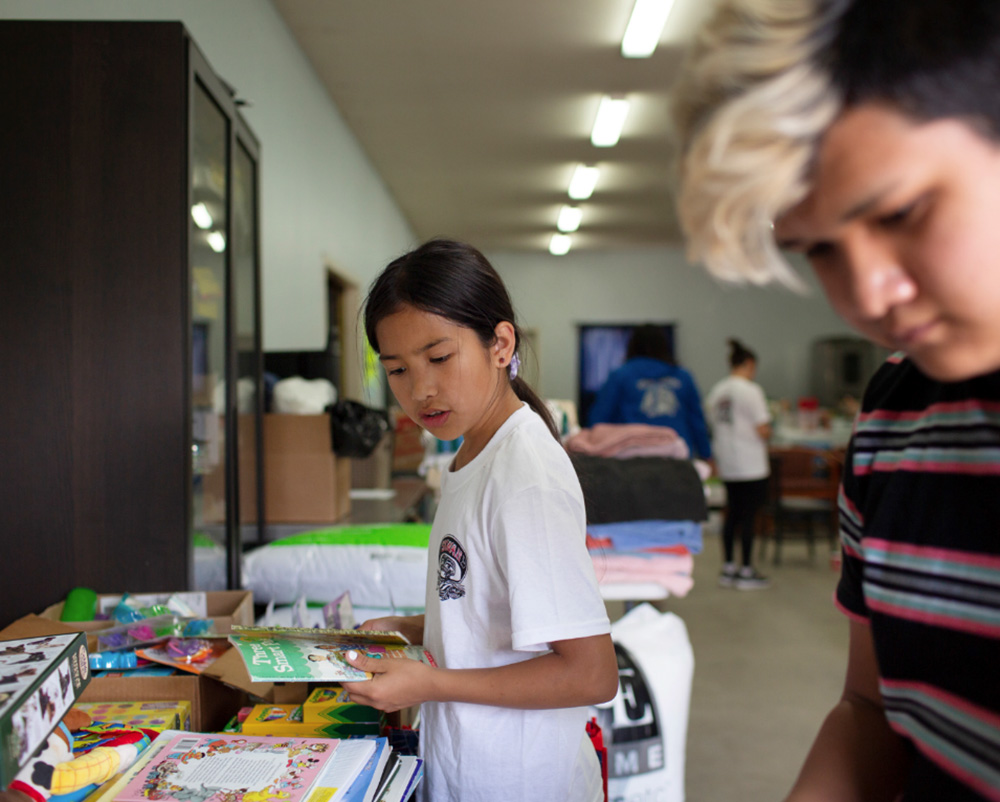
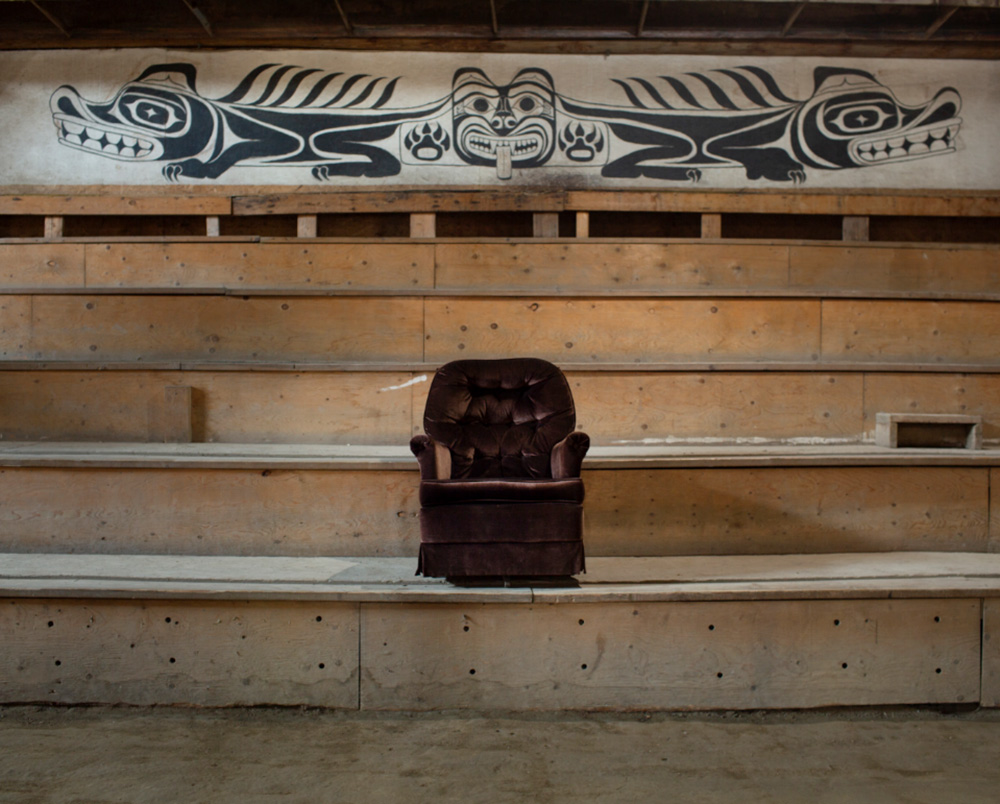
Because there is no air conditioning at Shxwhá:y Village, Kenworthy and Prest agreed with the City of Chilliwack that evacuees should first be sent to Chilliwack Secondary School to check-in and be allocated somewhere to stay before heading to Shxwhá:y Village for donations and cultural healing.
By July 1, all hotels in Chilliwack were full and evacuees in Chilliwack were being sent to Abbotsford. Similarly, in Kamloops, evacuees were being sent to Kelowna. As many evacuees don’t have their own transportation, they are having to rely on public transport and help from communities. Kenworthy says that communities including Shxwhá:y, are looking into hiring or purchasing buses to take the pressure off the evacuees' own nations.
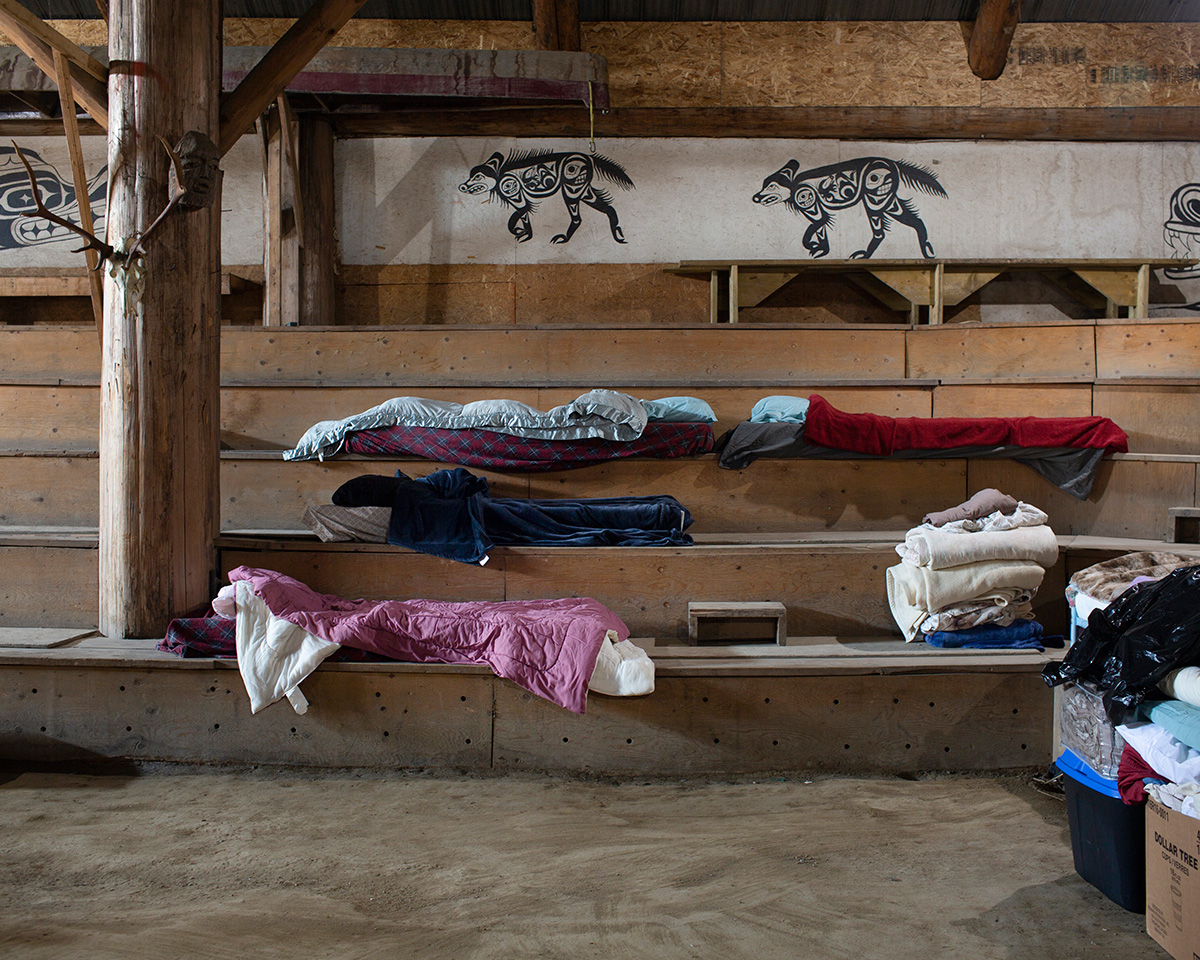
After returning home to Chilliwack at 4:30 a.m. from delivering water to firefighters in Lytton, Kenworthy received a phone call from a Lytton family. They’d been driving around all night and morning with nowhere to stay and were outside the Long House. Kenworthy rushed back to let them in to lay down and rest.
“We had our morning crew take care of them, offering coffee and breakfast and filling their car with groceries for the next day.” The family moved on, hoping to find somewhere cooler. The Long House, spacious as it is, bakes in the heat and has no air conditioning.
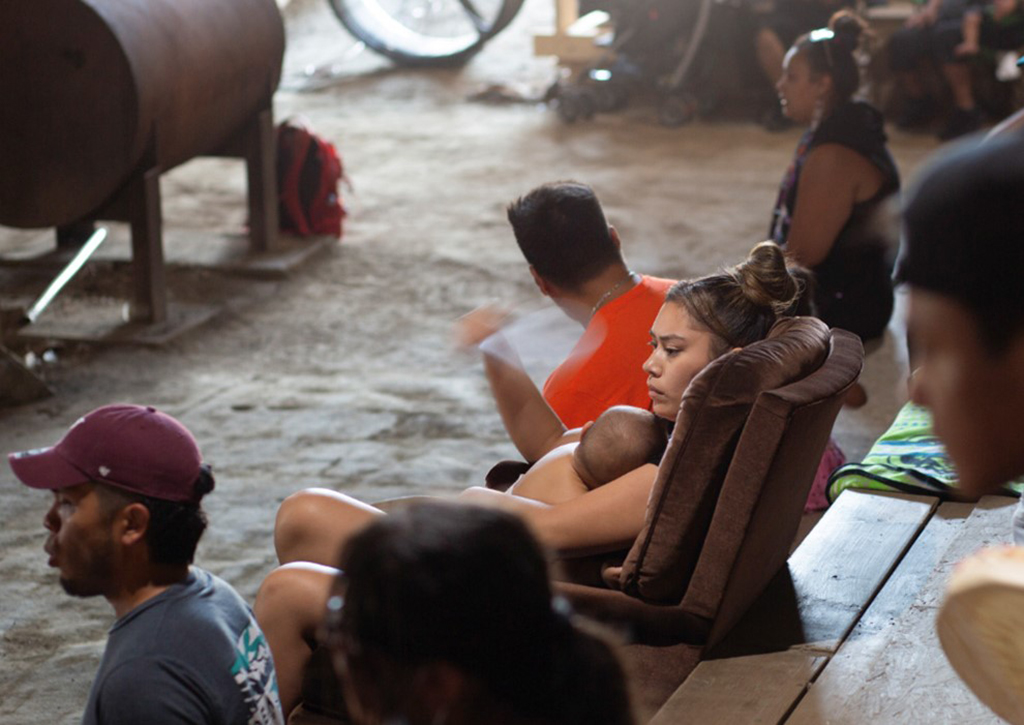
A mother fans her baby as the Pil’alt Canoe Family host a welcome evening of drumming and dancing for Lytton evacuees at the Shxwhá:y Village Long House, just two days after the Lytton fire.
“We’re very lucky with all of our First Nations people being fully vaccinated, we’re able to hold hundreds of people to sit here and share an evening together to rejuvenate,” Kenworthy says.
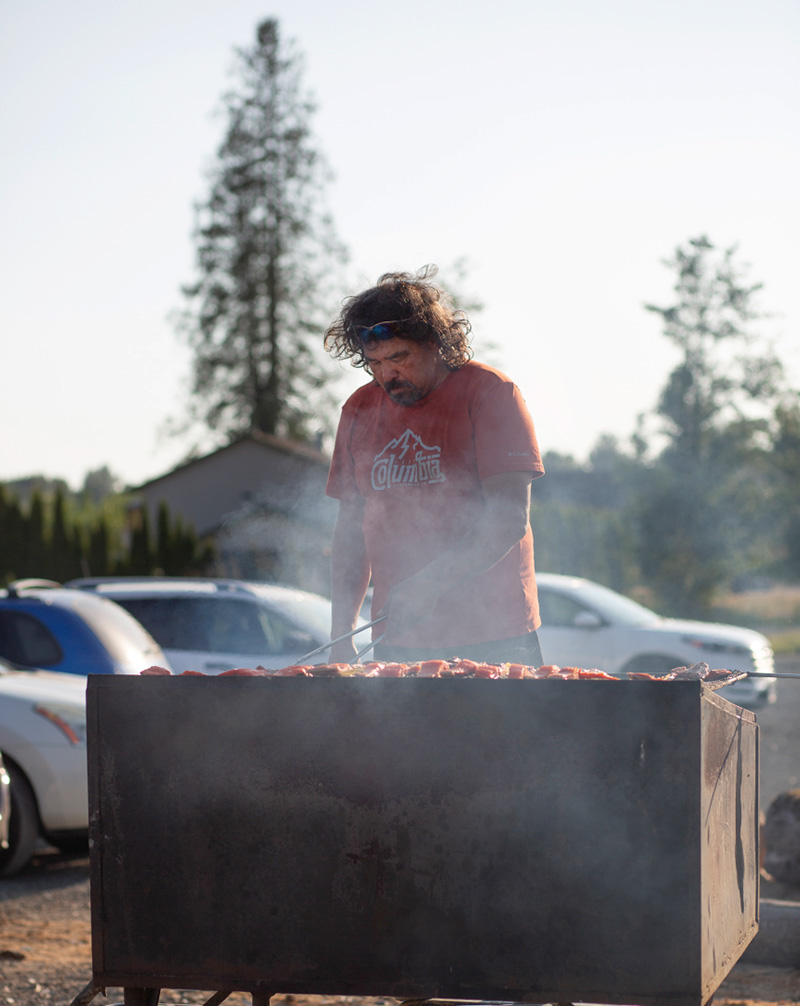
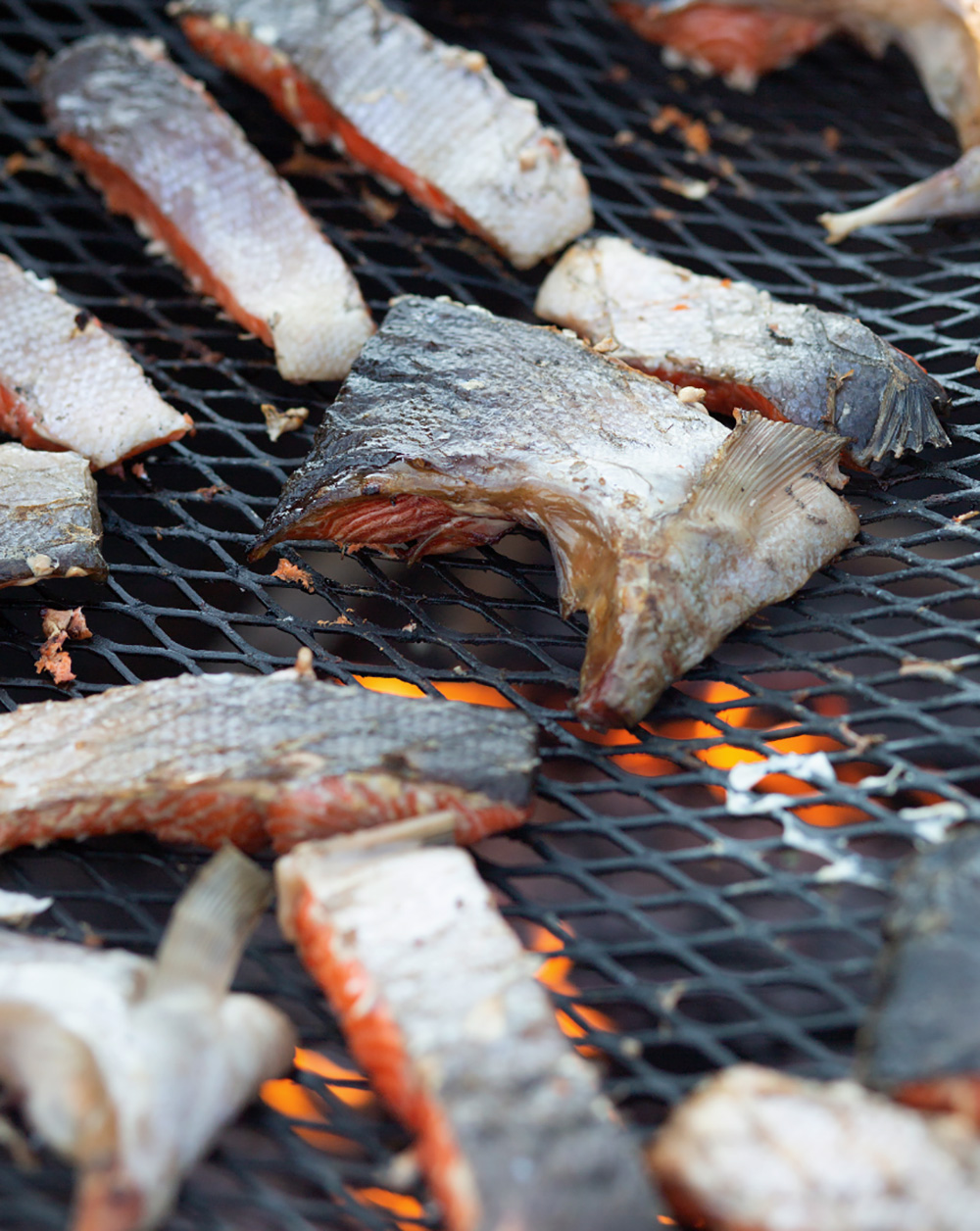
Rick Quipp is a member of Cheam First Nation and of the River Spirit Canoe Family. He has been barbecuing salmon for his community for 25 years.
“They know it’s going to be good,” he told me, “when they see it’s me doing it.”
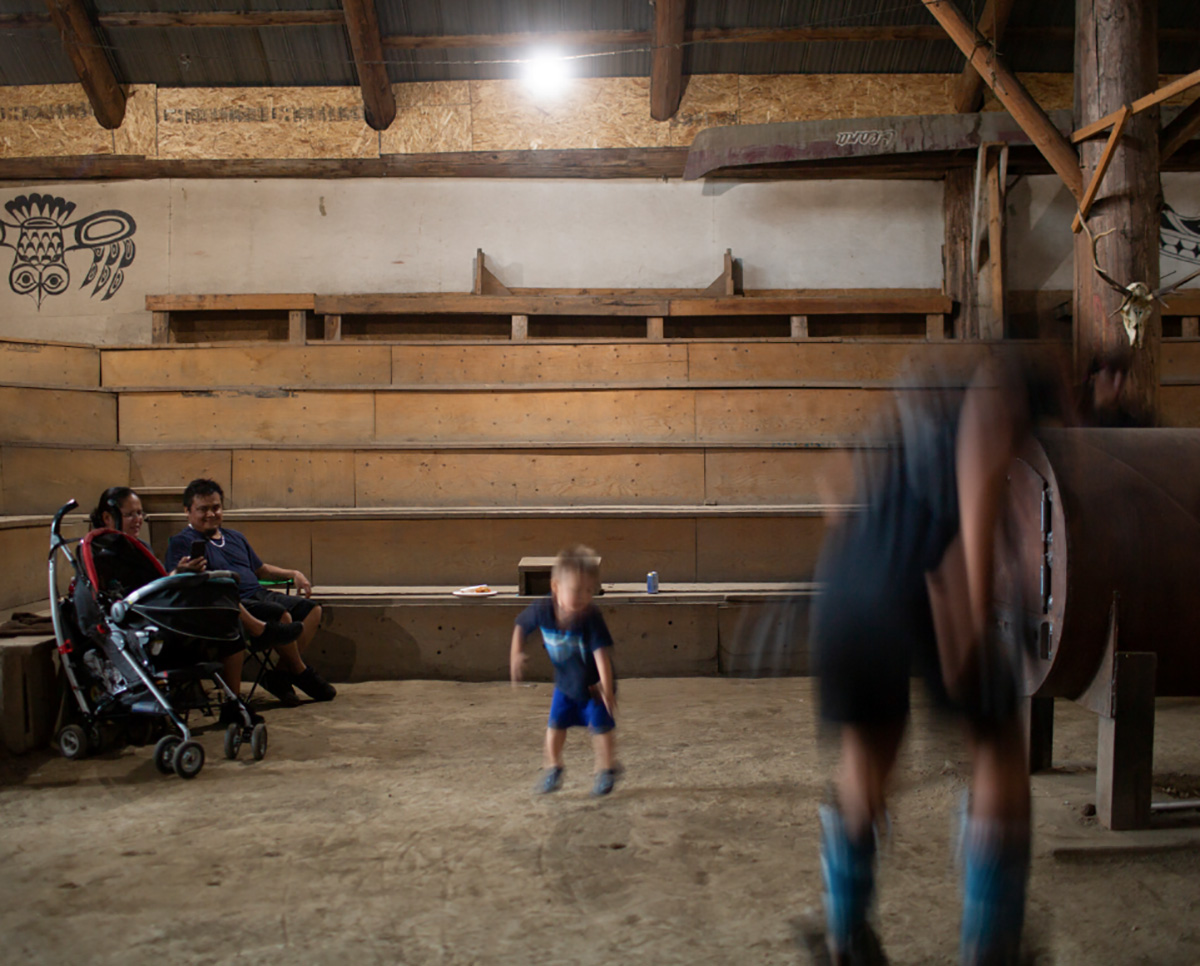
During a welcome evening, youth from the Pil’alt Canoe Family danced for the Lytton evacuees. Before the event, Kenworthy spoke proudly to me about their dancers. “Watching our children take the floor, listening to our drummers — this is our medicine, this is our healing.” She was right. As I looked around the room, smiles appeared and shoulders relaxed. It felt as though a weight had been lifted.
“They’re carrying on for those who couldn’t — who couldn't have children or practice their culture. These kids are so full of culture. It lifts our spirits.”
I visited Boston Bar Long House on the grounds of the Tuckkwiowhum Village heritage site and campground, about 50 kilometres south of Lytton. As the photos below show, they’ve been collecting children’s toys and other donations for evacuees and are starting to think long term, anticipating a long summer of wildfires. The Long House was packed from floor to ceiling with everything from tents and bedding to food and toiletries.
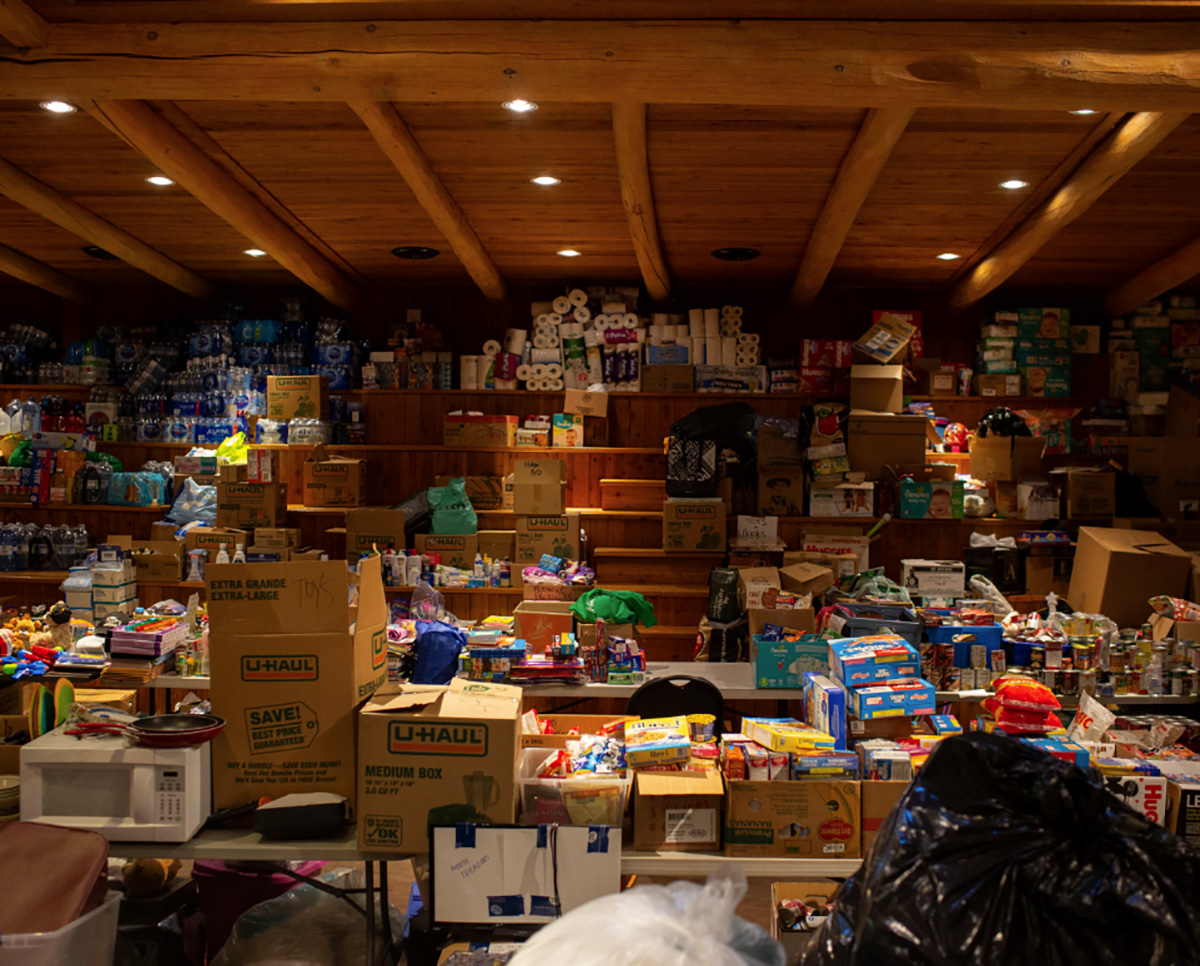
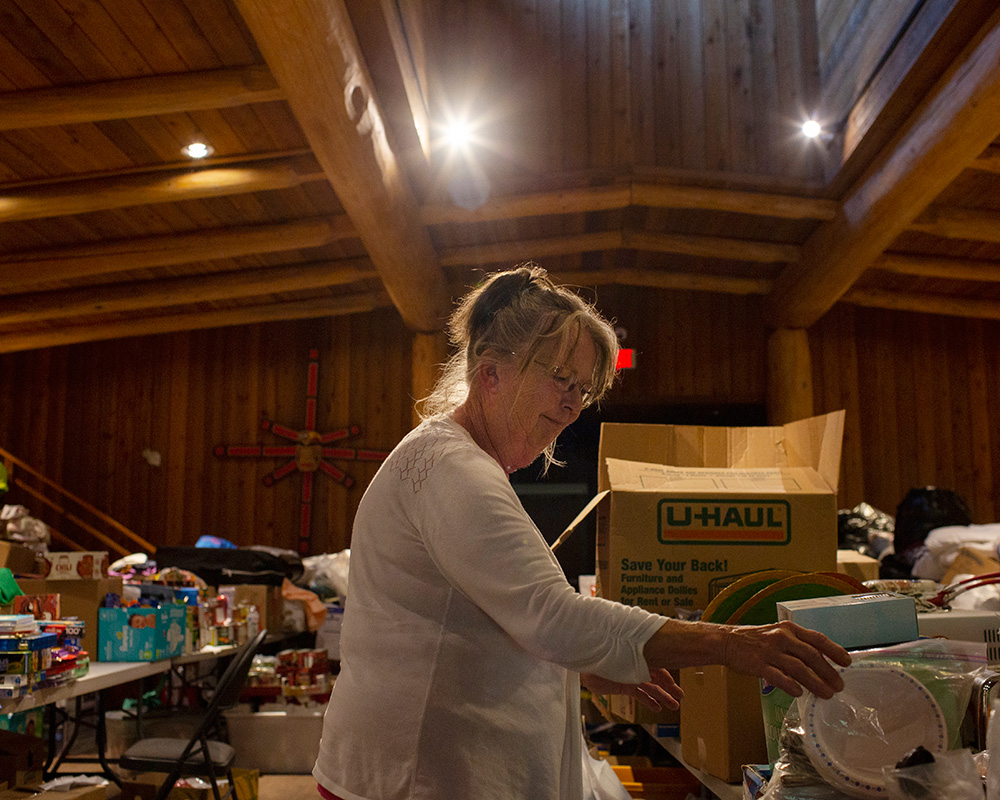
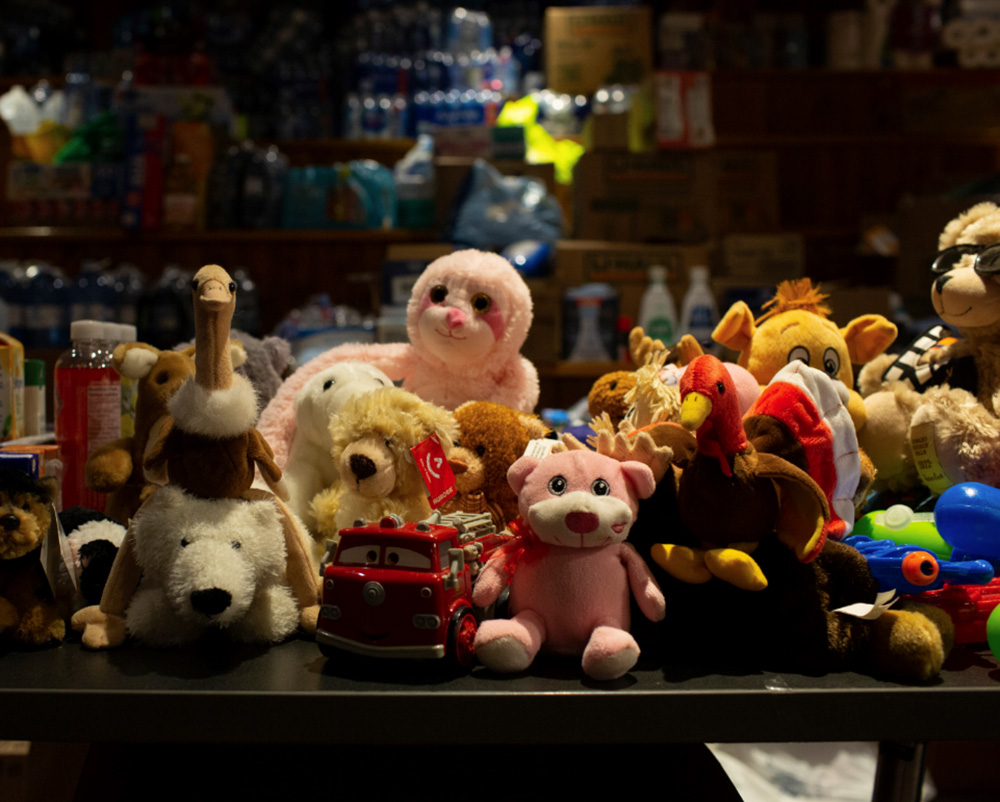
Karen Tillotson, a resident of Boston Bar, is co-ordinating donations and campers at Tuckkwiowhum Village. “So far we have one couple from Lytton staying in the campground, but we’re trying to collect as many tents and sleeping mats as we can, because we know it’s not only Lytton residents that will be on the run this summer. It’s only the first week of July.”
The campground is equipped with washrooms, showers and trees for shade. “An amazing thing that happened is that somebody donated their Airstream to us, so we’ll be able to provide a more robust temporary shelter for families.”
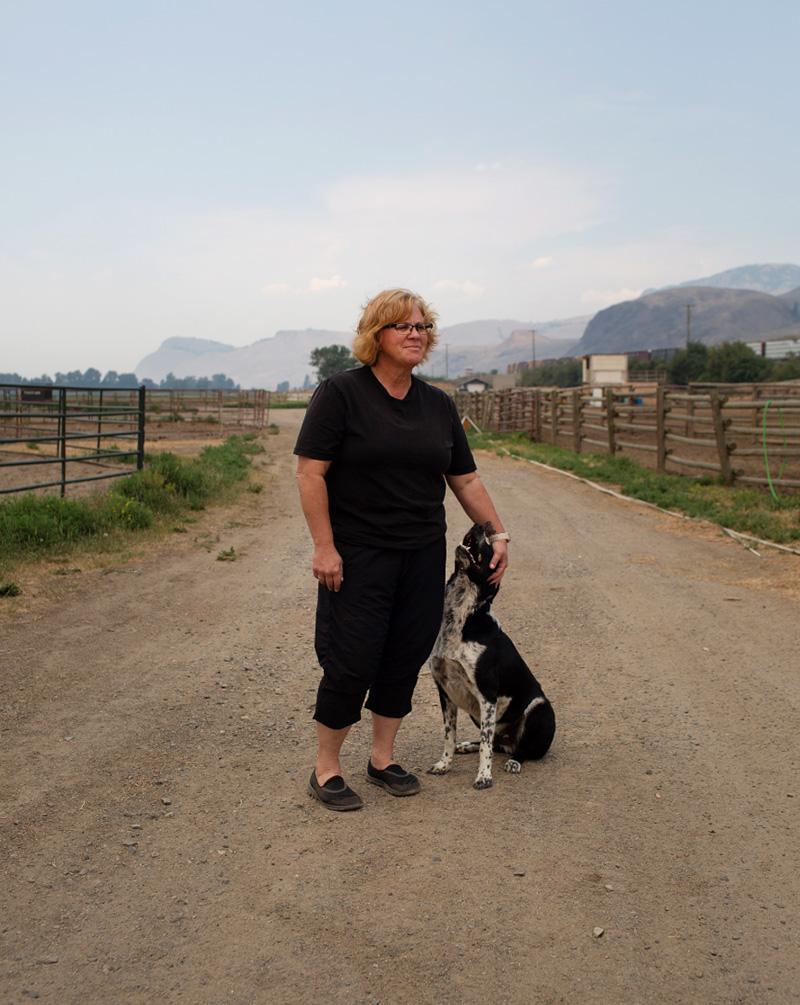
Horse trainer Kelly Kennedy’s ranch outside Kamloops stands ready to receive any livestock or pets displaced by the fires. “This is not the first time for us,” she tells me.
In 2017, British Columbia had a record breaking wildfire season, beginning at 100 Mile House and leading to the release of several evacuation orders and the declaration of a provincial state of emergency. “We rescued 112 animals and 37 people stayed on the ranch for three weeks.”
When I met Kennedy on July 4, she hadn’t yet received any animals. She thinks this could be because people are more organized after 2017, but was about to find out for herself. She was waiting for a call from the BC SPCA to give her the go ahead to drive to Lytton and collect any stranded animals.
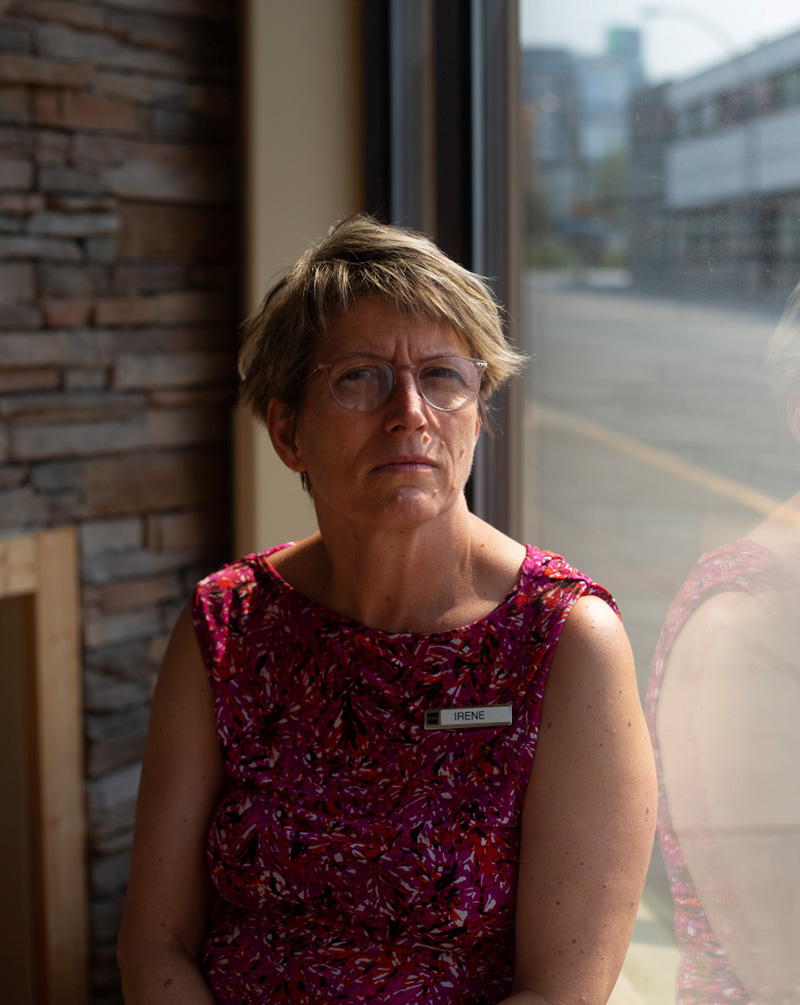
Irene Klossner works at the front desk of the Plaza Hotel in Kamloops. The hotel has been housing evacuees and pilots from Lytton and the nearby fires. One evacuee from Savona, just west of Kamloops, has her two dogs, cat, two birds and a lizard staying with her at the hotel. “The community just gets together and tries to be flexible. It’s all we can do, right?” she says.
Klossner has lived in Kamloops for five years. After the third fire season, she was diagnosed with a breathing disorder. “I try to put my head in the sand and say I don’t have anything, you know?”
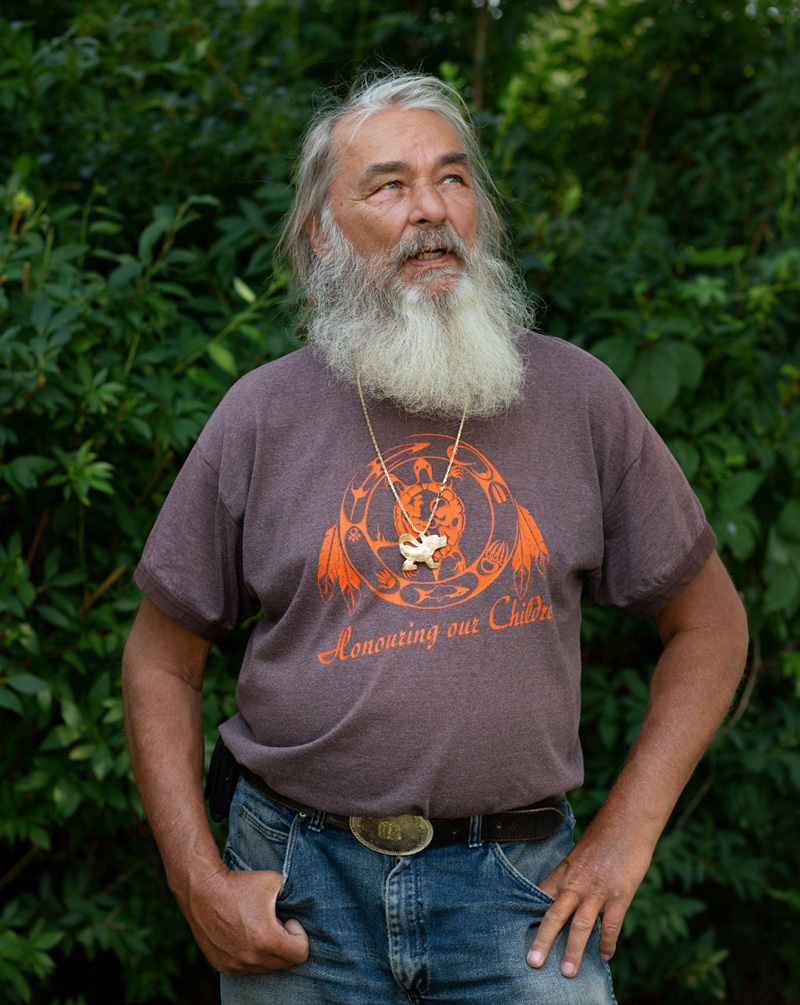
Raymond Stad and his wife Diana have lived just north of Kamloops since 2000. On Wednesday, June 30, they were evacuated from their home. “The government’s response has been less than adequate,” says Stad, who learned of the evacuation order via the internet.
This is the third time in five years Stad has been evacuated from his home due to fire. “Last time they gave us much more warning and it’s not as though they couldn’t see what was coming this time.”
Stad says he is disappointed there has been no help from authorities. “Why are they taking so long to issue a provincial state of emergency? If a city burns down like Lytton and it’s not a state of emergency, I don’t know what is.”
As of July 4, when I spoke to him, Stad’s home was still standing, but the neighbouring properties had burned down. “There was a change in the wind and we got lucky, for now,” he says.
I asked Stad how climate change has had an impact on the wildfires. “I’ve seen a huge change in the years I’ve been here,” he says. “We’ve been blessed in this part of the world for a long time. The rest of the world has had their hurricanes and their fires and their disasters, but we’ve got to pay the piper too — payday is here.” Stad says he doesn’t blame Mother Nature. “The way we’ve been treating her, we don’t deserve much more.” ![]()
Read more: Indigenous, Environment


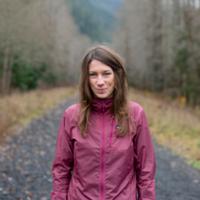
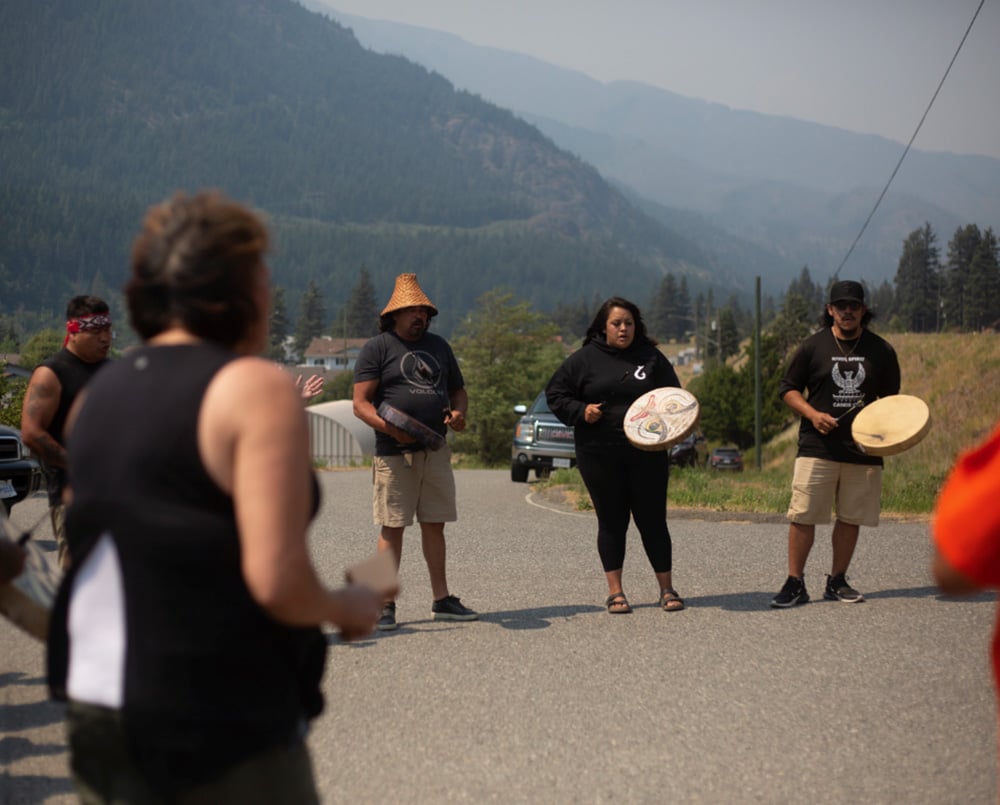












Tyee Commenting Guidelines
Comments that violate guidelines risk being deleted, and violations may result in a temporary or permanent user ban. Maintain the spirit of good conversation to stay in the discussion.
*Please note The Tyee is not a forum for spreading misinformation about COVID-19, denying its existence or minimizing its risk to public health.
Do:
Do not: